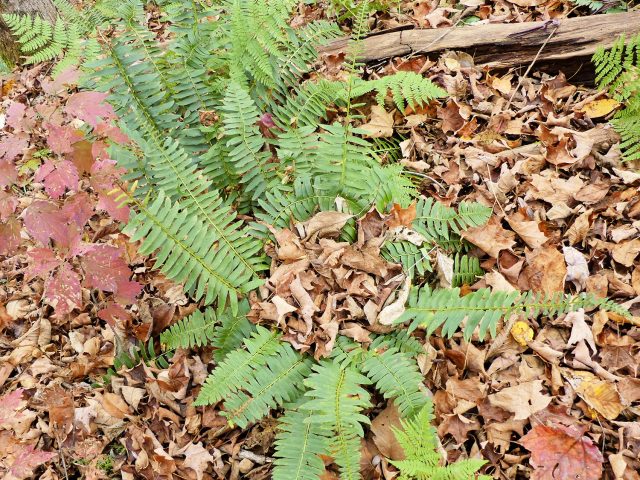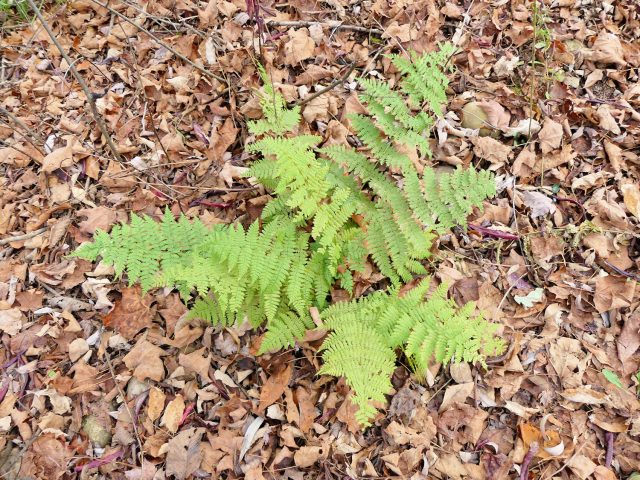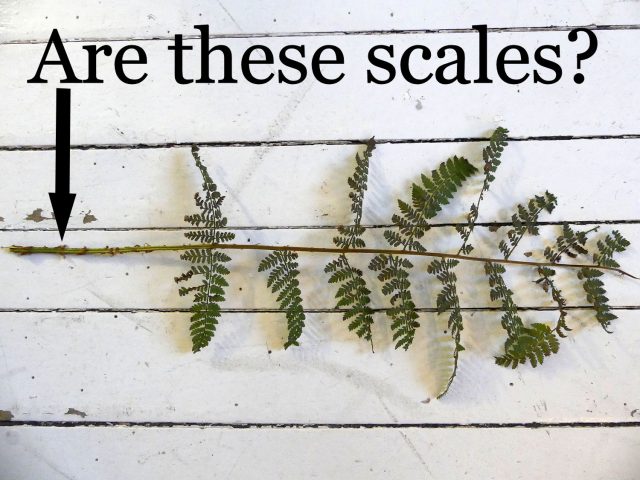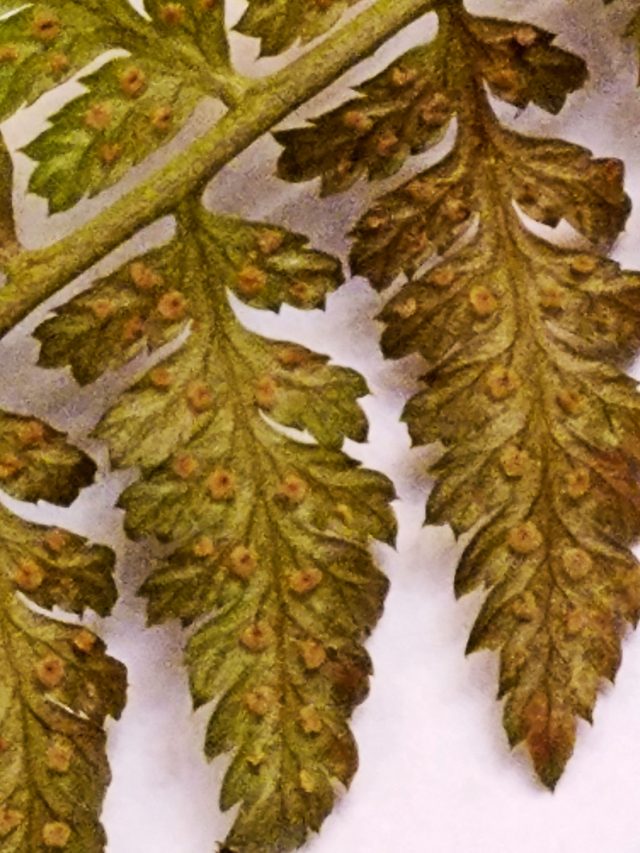
It’s so easy to think that nothing is living or growing under the snow, but all you need is a January thaw and a stroll in the woods to see that there are plants that have not given in to the onslaught of cold and snow. On my strolls over the years I have noticed that there are two ferns that remain evergreen in our woods during the winter. The previous two days the high was 45°F and it rained for a good part of each of those two days, removing almost all of the snowpack. It would have been the perfect time to take photos of the ferns, but then last night it snowed and the ferns are somewhat obscured as a result.
I don’t know much about ferns
I know a fern when I see one, and that’s about it. I thought it was about time I taught myself a bit more. The first step is to learn the terminology, otherwise whatever you read in guide books or online makes no sense. I have William Cullina’s Native Ferns, Moss & Grasses which illustrates all the terms with photographs, but you can visit Fancy Fronds Nursery’s glossary for a quick review. Join me as I try to identify these two ferns.
Christmas fern

Christmas fern, Polystichum acrostichoides, is so named because it’s been used for holiday decorations.
Lady fern, or wood fern?

I’m pretty sure this is intermediate wood fern (Dryopteris intermedia) and not lady fern (Athyrium felix-femina), but I’m not 100% certain.
So I searched online for evergreen ferns, and the name Dryopteris kept coming up. It turns out Dryopteris intermedia (aka intermediate wood fern, fancy fern, and glandular wood fern) also looks exactly like my fern. So, which is it?
I took one sample frond to bring into the house, but it occurs to me that fern fronds that have been through a couple of months of winter are bound to be a little beat up. The brown, papery stuff stuck to the lower stem doesn’t much look like a scale to me, but maybe if I saw a newly unfurled frond in spring it would look more like it. Also, the wood fern is supposed to have “short glandular hairs, visible with a good hand lens.” I think we have a magnifying glass somewhere in the house, but I couldn’t find it.
The easiest way to distinguish these two ferns? The sori (spore cases) are circular on the intermediate wood fern.

Posted for Wildflower Wednesday, created by Gail of Clay and Limestone, to share wildflowers/native plants no matter where you garden in the blogosphere. “It doesn’t matter if we sometimes show the same plants. How they grow and thrive in your garden is what matters most. It’s always the fourth Wednesday of the month!”
from Cold Climate Gardening http://ift.tt/2Ea8JcR





No comments:
Post a Comment